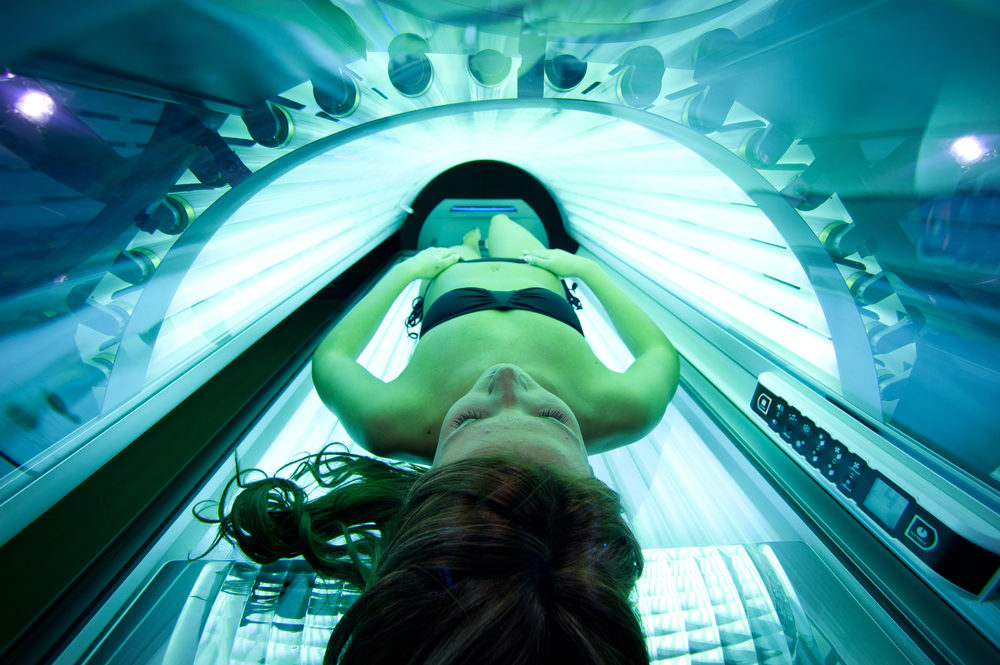Despite Tanning Cancer Risks, One-Fifth Of Salons Ignore Restrictions On Minors: Study

Although there is mounting concern among health officials about the cancer risk associated with indoor tanning, new research suggests that 20% of tanning salons are failing to comply with existing restrictions on the use of the beds among young teens.
In a study published last week in the journal Translational Behavioral Medicine, researchers from Yale University assessed salon compliance with indoor tanning bans among minors under 17 and 18 years of age, across 14 different states.
According to the findings, while most of the facilities told minors they could not tan at the salons, about one out of every five did not enforce state bans.

Did You Know?
Change Healthcare Data Breach Impacts Millions of Customers
A massive Change Healthcare data breach exposed the names, social security numbers, medical and personal information of potentially 100 million Americans, which have now been released on the dark web. Lawsuits are being pursued to obtain financial compensation.
Learn MoreFemale researchers, posing as minors, telephoned a sample of 412 indoor tanning businesses in 14 states with bans on tanning among minors under the ages of 17 and 18. States included California, Connecticut, Delaware, Hawaii, Illinois, Louisiana, Minnesota, Nevada, New York, Oregon, Texas, Vermont, Washington, and the District of Columbia.
Researchers evaluated differences in compliance by census region, and years since a ban was implemented in that specific state.
Overall, 80% of businesses told the researcher she could not use indoor tanning beds or booths. However, the findings suggest that indoor tanning salons in Southern states were less compliant, as were salons in states where a ban was recently put into place.
On average, southern states upheld indoor tanning bans for minors only 71% of the time. However, researchers did note that states that had bans in place for at least two years were 88% compliant, and told minors they could not tan.
Many salons also provided inaccurate information concerning the dangers of indoor tanning when a minor called, according to the findings. About 20% of salons said the dangers of indoor tanning were no worse than dangers posed by the sun, and 10% said there were no dangers at all.
Misinformation is one of the many factors leading to the increase in melanoma rates among women, experts warn.
Melanoma is the deadliest form of skin cancer. Young women who tan indoors before the age of 30 have a six times higher risk of developing melanoma than their peers.
Many salons in the study cited positive benefits of indoor tanning. Nearly 30% said one benefit included vitamin D, 27% cited social or cosmetic benefits, and 26% said indoor tanning treated skin diseases. Only about five percent of salons said there were no benefits to indoor tanning.
Indoor Tanning Cancer Risks
Past studies indicate indoor tanning is not only increasing rates of melanoma, but also increases a person’s risk of non-melanoma skin cancer. One study indicated indoor tanning is very addictive to teens and young adults.
Conversely, more than half of the salons identified burning as a potential danger of indoor tanning, while only 20% said skin cancer was a danger for those who tanned indoors.
A study published last year indicated indoor tanning bans enacted in New Jersey were not successful in deterring teens from tanning. The study found no significant decline in indoor tanning rates among teens. In particular, young white females are ignoring the risks associated with indoor tanning, other studies have found.
The number of skin cancer cases in the U.S. reached more than 260,000 in 2015, costing the U.S. healthcare system hundreds of millions of dollars in related medical costs.
Researchers of the new study warn additional enforcement and education is needed to increase indoor tanning ban compliance and prevent teens from tanning early to potentially stave off more cases of skin cancer in the future.





0 Comments